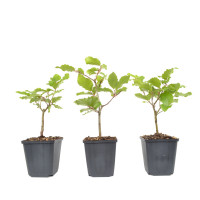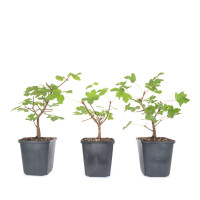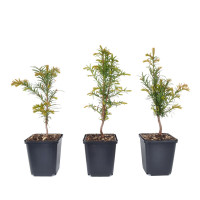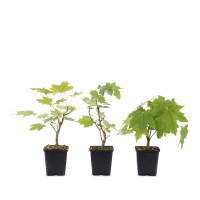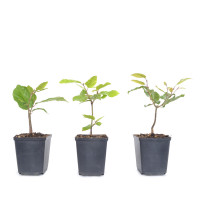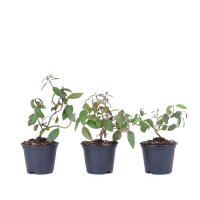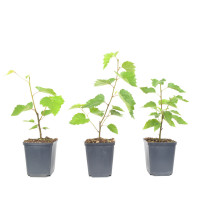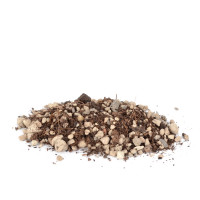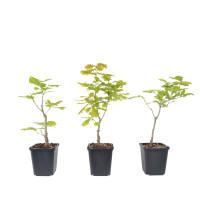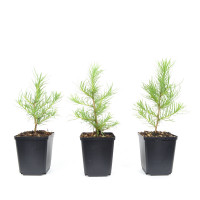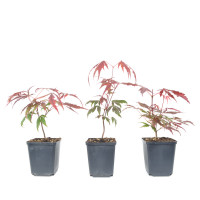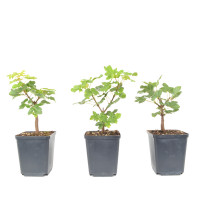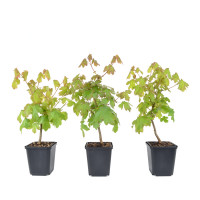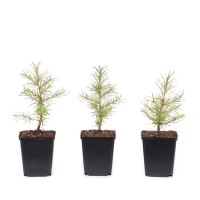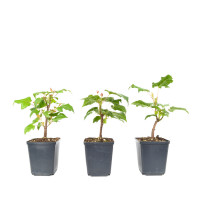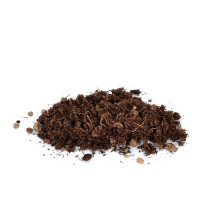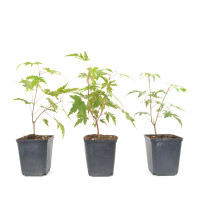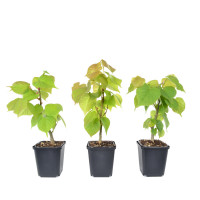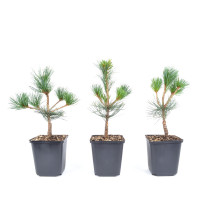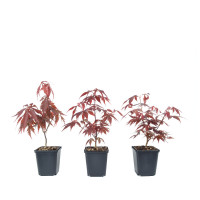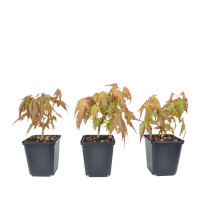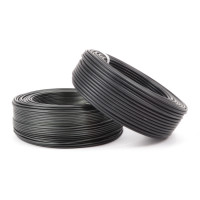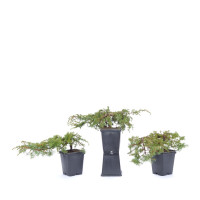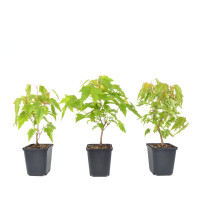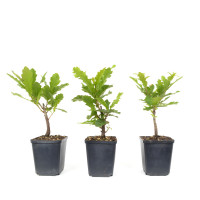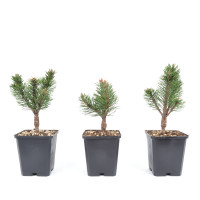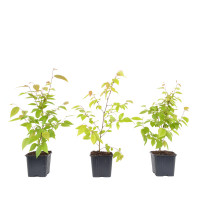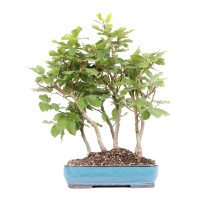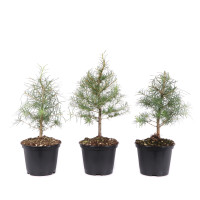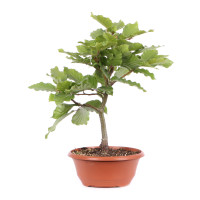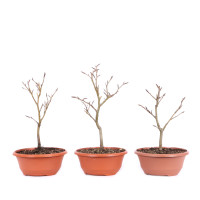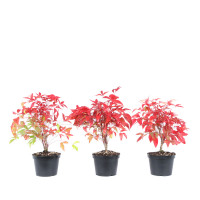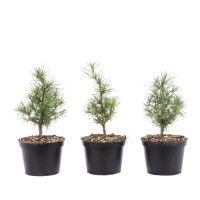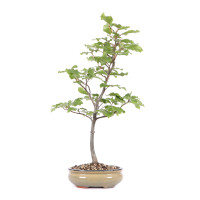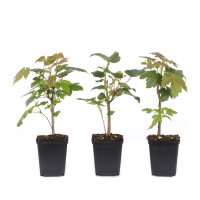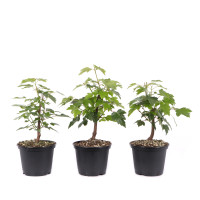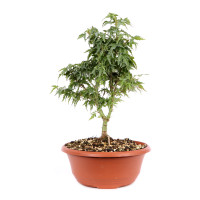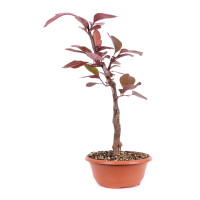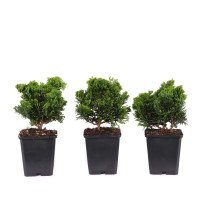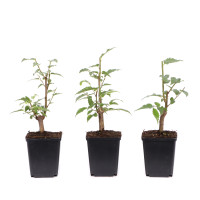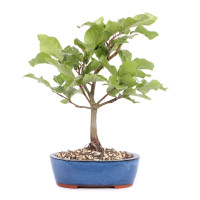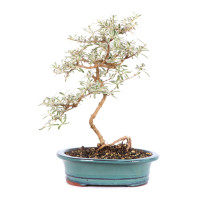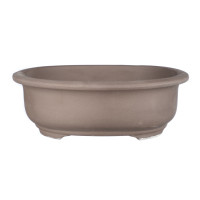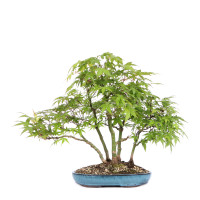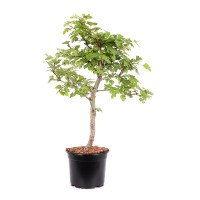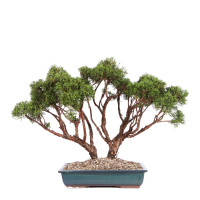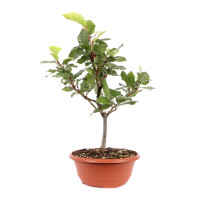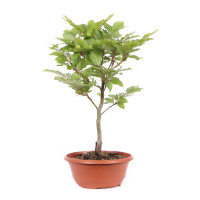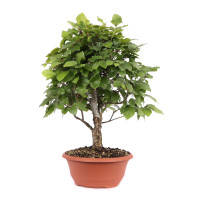- Order number: 1067-03-T
- Height: ca. 15 - 20 cm (no pot)
- Foliage: deciduous
- Bonsai Pot: plastic pot
- Age: 3 years
- Origin: Germany
- Product contents: You will get a similar plant
Fagus sylvatica - European Beech
General:
If there were no people and no associated cultural landscape, pure beech forests would cover almost all of Germany. The common beech is unparalleled in its dominance over other tree species. There is no species that is so shade-tolerant in its youth and darkens the forest floor in old age so that no other plants have a chance of growth. Beeches grow up to 30 meters high and develop an overwhelming beauty as a single tree. The silvery bark is smooth even on old specimens. The leaves are oval, slightly wavy at the edge and glossy dark green. In autumn, the leaves turn yellow to red-brown and some of them stick until spring. The beech has the strongest topsoil penetration of all native forest trees and often forms a conspicuous and broad trunk base. Overall, it is undemanding compared to the site conditions, but suffers from heat, waterlogging and drought.
Care as a bonsai:
The beech forest should be familiar to every bonsai lover. It is a synonym for nature in Germany. Accordingly, the relationship to the common beech is more than understandable through the care of a bonsai. The beech tolerates pruning very well and willingly sprouts out of the old wood. The fresh shoot can be pinched on vital and ripe plants. The tip of the shoot, which is still soft, is plucked off except for two new leaves. This creates a compression and the internodes of the new shoot remain shorter. Branches can be wired well, but the wire must be removed in good time. Otherwise, unsightly scars will develop that will no longer disappear due to the smooth bark. The beech loves a sunny spot but also thrives in partial shade. The plant should be protected if it is too hot and dry. The substrate should not dry out, but waterlogging should also be avoided. Treatment with mycorrhiza and organic fertilization are very beneficial for the soil and the vitality of the plant. The beech is hardy, but endangered by late frost in spring. After the leaves have unfolded, you should also watch out for mealybugs and rinse them off with water in good time.







